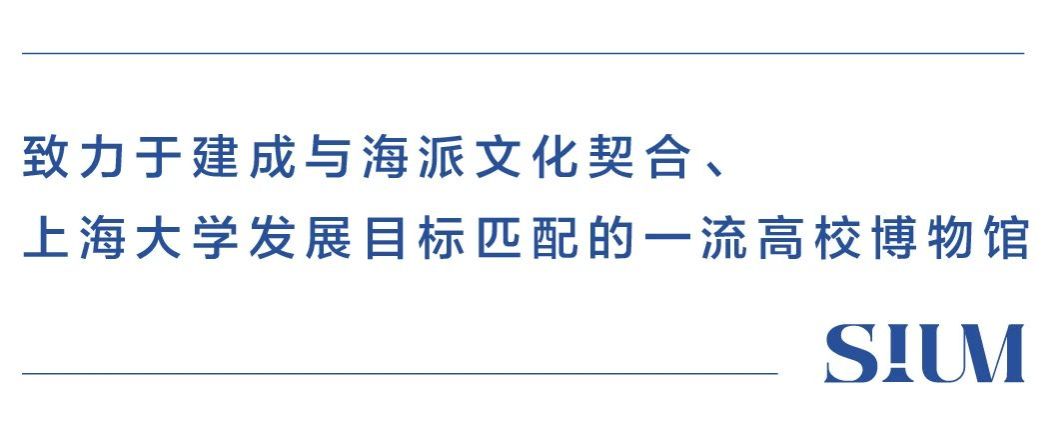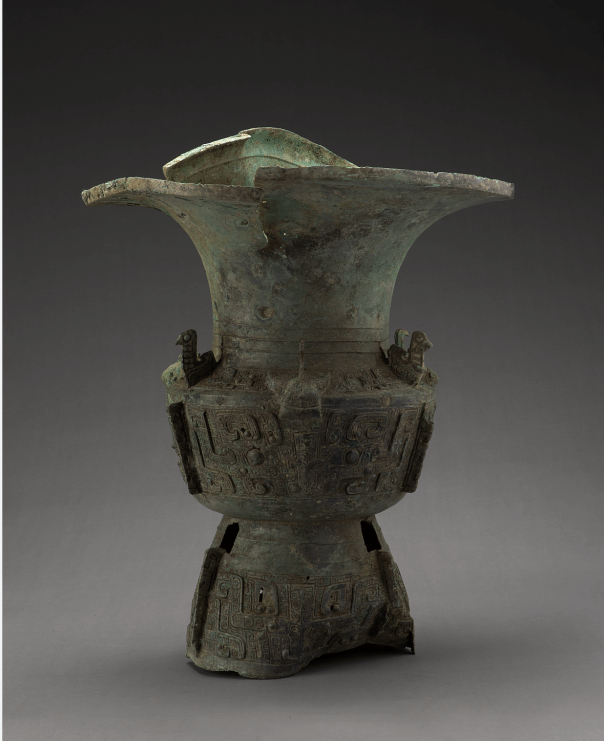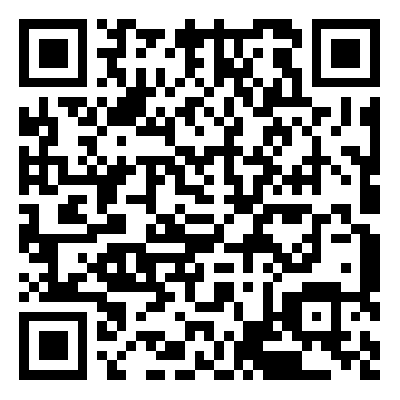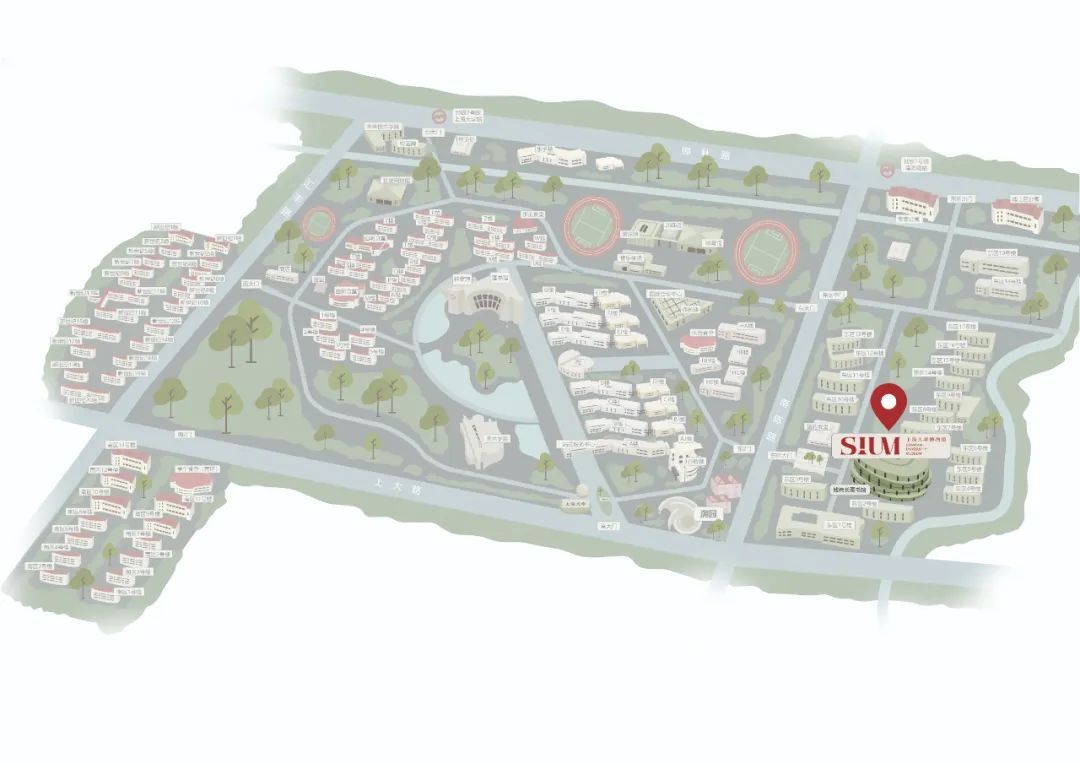
“沉睡三千年🚶🏻♀️➡️,一醒驚天下”的三星堆遺址,是中華文明璀璨星河中明亮而神奇的一顆。
羅丹是“現代雕塑之父”🤸🏿,他的作品中飽含對生命、自然的歌頌、熱愛與憂思。
在天美平台舉辦的特展——“青銅之光👩🏼🦰:三星堆與羅丹的超時空對話”展出了許多三星堆、金沙遺址出土文物和羅丹及其同時代雕塑家的作品,讓我們一起來詳細了解展品背後的故事吧!
第三部分 敬天通神
無論是數千年前的三星堆青銅器,還是19世紀的羅丹雕塑,“神”始終是二者重要的表現題材。三星堆遺址中大量祭祀禮儀用器的使用與集中埋藏,表明宗教祭祀活動在當時社會政治生活中占有十分突出的地位,並彰顯出“溝通人神”的原始宗教巫術文化特征👨🏻💼。羅丹不僅創作有大量以神為主題的雕塑,更為重要的是🐕🦺,傾註了羅丹心力的作品💬,基調幾乎都帶有宗教的內省和焦慮,體現了其對人類痛苦的憐憫與宗教信仰的追求。
青銅尊

· 商代後期(公元前1300年—前1100年)
· 高55厘米,口徑44.5厘米
· 2022年出土於四川廣漢三星堆遺址八號祭祀坑,K8⑨:923
· 四川省文物考古研究院藏
· Late Shang Dynasty (1300B.C.-1100B.C.)
· H.55cm; Dia. 44.5cm
· Unearthed from No. 8 sacrificial pit at the Sanxingdui Site in Guanghan, Sichuan, in 2022,K8⑨:923
· Collection of Sichuan Provincial Cultural Relics and Archaeology Research Institute
喇叭口🥍👰🏼♀️,頸微弧,折肩,斜腹內收,高圈足💵,外撇👉。口沿處有一周凸棱🧑🏿⚕️,圈足上有三個不規則鏤孔(芯撐孔)。肩部有三立鳥🧑🏽🦳,分別與腹部👷🏼♀️、圈足上的扉棱及芯撐孔成一線,將肩部🕵️♂️、腹部及圈足上的紋飾分隔成三組。兩立鳥間🚮、肩腹連接處各有一牛首,牛首額間有一鉤狀額飾。牛首兩角之間紋飾高於肩部紋飾。頸部有三周凸弦紋📈👩🏻🦱。肩部飾象鼻夔龍紋⛺️,腹部主紋為分體獸面紋✊。圈足上部有兩周凸弦紋,其下主紋為虎耳獸面紋。肩、腹及圈足均以雲雷紋為地📴。
推測其應是作為盛裝海貝等珍貴物品的祭祀禮器⏸。三星堆遺址出土的部分具有中原商文化風格的青銅禮器有可能是商的輸入品🧿,也有可能是古蜀匠人的仿製品。這些帶有明顯中原風格的禮器🪄,是商文化的遠程輻射🧖🏻♂️,反映出蜀地與中原商的文化交流。
It has an everted mouth, a slightly curved neck, a folded shoulder, a belly tapering downwards, a high ring foot, and a flaring foot rim. The rim of the mouth features a protruding ridge. On the circular foot, there are three irregular holes (for inner and outer mold positioning). On the shoulder, there are three standing birds aligned with Feileng (扉棱, protruding edges) on the belly and the holes on the ring foot, which divide the patterns on the shoulder, belly, and ring foot into three sections. Between every two standing birds and at the junction of the shoulder and belly of the bronze vessel, there is an ox head with a hook-shaped decorative part on its forehead. The decorative parts between the horns of the oxen are higher than the other decorative parts on the shoulder of the bronze vessel. There are three-circle Tu Xian Wen (凸弦紋, bulging parallel-line pattern)around the neck. The shoulder is decorated with Xiangbi Kuilong Wen (象鼻夔龍紋,elephant-trunk-shaped kui-dragon pattern), while the belly is decorated with Fenti Shoumian Wen (分體獸面紋, symmetric animal-face pattern). There are two-circle Tu Xian Wen (凸弦紋,bulging parallel-line pattern) around the upper part of the ring foot. the lower part of the foot is mainly decorated with Hu’er Shoumian Wen (虎耳獸面紋, tiger-ear-shape animal-face pattern). The shoulder, belly, and ring foot are all adorned with Yunlei Wen (雲雷紋, cloud & thunder pattern). It is speculated that this bronze vessel was used as a ceremonial container in ritual activities for holding precious items such as seashells. Some bronze ritual objects unearthed from the Sanxingdui Site bear some resemblance to the Shang culture in the Central Plains. They could be imported goods from the Shang Dynasty or imitations created by skilled craftsmen in ancient Shu. The ritual objects with a prominent style of the Central Plains justify the far-reaching influence of the Shang culture, and reflect the cultural exchanges between the ancient Shu Kingdom and the Shang Dynasty in the Central Plains.
展覽時間:
2023年12月13日至2024年2月1日
展覽地點🧑🏻🚀:
天美平台一層臨展廳
(上海市寶山區南陳路333號)
開放時間:
周一至周日8:30-16:30(16:00停止入館)
校內師生憑本人一卡通入館,無需預約。
校外觀眾采取網上預約方式入館⛲️,掃描下方二維碼或關註“天美平台”微信公眾號,點擊“個人預約”🔂🧑🦼➡️。

/地址/
上海大學博物館
(南陳路333號)
